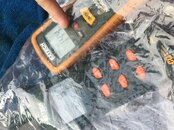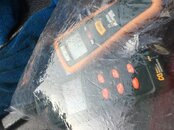Interesting we spoke about CO poisoning here and I think I got poisoned last Sunday on a boat dive. It happened once or twice before but at first I put it to hard breathing rental regs or having too tight wetsuit pressing on my neck arteries and/or improper this timebreathing technique. I am sure this time though it was CO as symptoms were exactly as listed on the NHS UK website for mild CO poisoning. The source of the CO was not air in the tanks - it was the boat's engine. Breeze was light and pushing exhaust fumes into the semi-open cabin, where I was standing alone during the engine warmup phase. Compounding fact was the presence of the high dock with wall higher than myself, that enclosed the space even more. I started to have headaches on our way to first site before we even got to water ( hence I am sure it is not the tanks ). After coming home from 2 dives, splitting headache, nausea and dizziness for the rest of the day. Took me 2 days to feel 100% myself again. Boat is diesel powered, half of the deck is open, half is semi enclosed. I spoke to skipper afterwards, we will try to get CO detectors to test the presence of CO next time, to confirm my suspicions.
I am writing this as I was wondering how the deceased cave diver knew that CO is in his tank. What symptoms were the telltales. I am now able to identify them in some degree on myself after latest occurrence.






